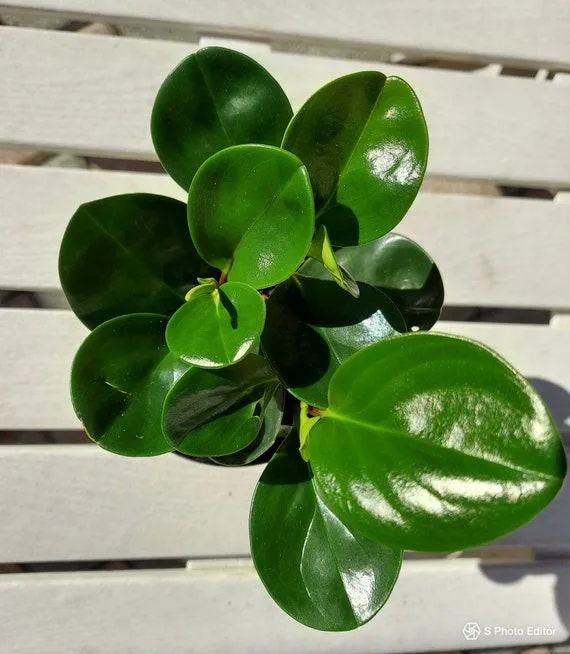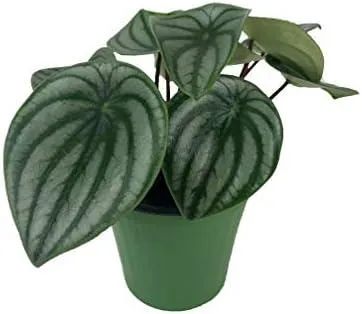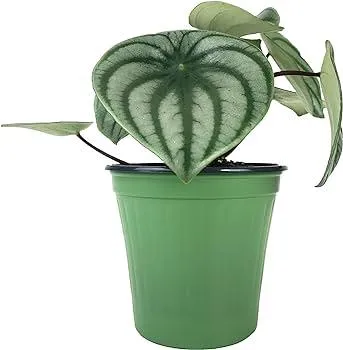The Advantages of Watering Your Peperomia with a Wick
Peperomias are lovely decorative houseplants known for their unusual leaf shapes and textures. Keeping your peperomia healthy and growing well can seem tricky at first, but one easy way to ensure proper moisture is to use a wick watering system. In this article, I’ll explain the benefits of wicking and how to set it up for your peperomia.
Why Wicking Works Well for Peperomias
Peperomias like to dry out slightly between waterings but cannot tolerate dry soil. The wick system allows just the right amount of moisture to constantly wick up from a reservoir to the soil. This prevents overwatering or underwatering issues. From my experience growing peperomias for years, wicking creates a stable moisture environment that mimics their natural habitat conditions.
Peperomias come from different areas across Central and South America with varied humidity levels. The wick works like a humidity gauge, drawing up moister automatically as needed. You won’t have to constantly check the soil’s dryness with your finger. At the same time, the peperomia’s root ball stays mildly damp rather than soggy.
Setting Up an Effective Wick System
- Choose a water-absorbent wicking material like cotton string, jute twine, or rope.
- Place the wick end into a container of water, letting the other end reach up into the peperomia’s drainage holes.
- Cover the wick with fresh potting mix when refilling the pot.
- Only refill the water container when it becomes low.
I’ve found jute twine works well and blends in naturally with the soil. Make sure to leave several inches of wick extending above the soil. This allows a continuous moisture flow without the end getting waterlogged.

A Simple Wicking Case Study
Here’s a real-life example: One of my office peperomias was struggling, with curled pale leaves. I suspected it was getting too dry between waterings despite my best efforts. On a whim, I tried a wick system using an empty plastic bottle under the nursery pot. Within a week, the peperomia perked up noticeably as the wick maintained consistent moisture. Its leaves uncurled, plumped out, and resumed vibrant green growth. The wick saved this peperomia!
Some key factors in this success story: Proper wick placement with several inches extending above the soil, choosing an absorbent wicking material, and keeping the water reservoir full. With wicking, you never need stress over watering schedules again.
Troubleshooting Wicking Issues
On rare occasions, wicking can malfunction or cause new problems. Here are some possibilities to watch out for:
- Wick becoming waterlogged at the soil line – trim off a half inch to expose a drier portion.
- Not enough water reaching the soil – make sure the wick fully contacts the water reservoir.
- Reservoir running dry too quickly – use a larger container or refill more regularly.
- Root rot from overly wet soil – adjust wick placement or switch to a fast-draining potting mix.
With some minor adjustments like these, wicking issues can usually be resolved. I highly recommend giving it a try for your peperomia’s care. It beats constant thumb-watering and guessing when they’re dry!

Final Thoughts
In summary, using a wick system for peperomias is a simple method that yields big benefits. It regulates moisture at the roots while preventing overwatering problems. Wicking mimics their native humidity and creates optimal growing conditions. If you want low-maintenance peperomia care without the hassle of checking dryness, go ahead and rig up some wicks! Your plants will thank you with improved growth and health for sure.
I hope these tips on setting up and troubleshooting a wicking system have been helpful! Please let me know if you have any other peperomia care questions that I could try to answer based on my experience. With wicking, your peperomias are sure to thrive for many years to come.
Peperomia Wick Care Information
| Characteristic | Details |
|---|---|
| Water | Water only when the top 1/2 inch of soil is dry. Use a wick or tray method to keep soil slightly moist at all times. |
| Light | Keep in bright, indirect light. Exposure to direct sunlight may burn leaves. |
| Soil | Well-draining, airy soil is best. Pebble trays also help keep humidity high. |
| Temperature | Grow between 60-80°F. Avoid direct exposure to heating/cooling vents. |
| Fertilizer | Feed monthly in spring and summer with a diluted, all-purpose plant fertilizer. |
| Pruning | Prune off damaged or drying leaves/stems as needed to maintain a bushy appearance. |
FAQ
-
What kinds of peperomia plant can be grown with a wick system?
There are several varieties of peperomia that can basically grow well using a wick watering system. Some popular choices are Peperomia caperata, Peperomia polybotrya, Peperomia obtusifolia, and Peperomia scandens. As long as the plant has small, shallow root systems, it will probably do okay with a wick.
-
How does a peperomia wick watering system work?
A wick system consists of a container filled with water and a wick that raises water from the reservoir to the soil. You place the peperomia pot above the water container, making sure the wick reaches up into the soil. Capillary action pulls water up the wick as the soil dries out. It’s a pretty cool way to water the plant automatically without over-watering, although it takes some experimenting to get right.

-
What type of container and wick material works best?
Most folks use plastic nursery pots for the peperomia and a glass or plastic container filled with water on the bottom. However, you can improvise containers from all sorts of things around the home. Kind of fun and creative! For wicks, cotton string or strips of fabric like felt or carpet work well. Supposedly Dr. Bronner’s hemp wicks may be amazing, but I haven’t tested those out myself.
-
How often do I need to refill the water reservoir?
This depends on factors like pot size, growing conditions, and plant size. You’ll need to check the water level every few days at first to see how fast it’s being used up. Once established, most peperomia wick systems only require refilling about once a week. But don’t take my word for it – keep an eye on that reservoir level yourself!
-
Is there any risk of over-watering with a wick system?
On the one hand, wick systems are designed to prevent over-watering which can cause root rot. At the same time, it’s still possible to overdo it if you fill the reservoir too high or if conditions are constantly moist. Pay attention to the soil – it should be just moist, not soggy. You may need to adjust the wick length or train the plant to a dry-medium schedule. In general, the wick does a decent job of self-regulating moisture levels.
-
What problems may arise with a wick system?
Two issues that occasionally crop up are algae growth in the water reservoir and wicks that stop absorbing water effectively over time. Algae can be slowed by using bottled or filtered water instead of tap. As for wicks, it’s best to replace them every few months. Other than that, peperomia wick systems tend to just work without many hassles – a pretty low maintenance setup!

